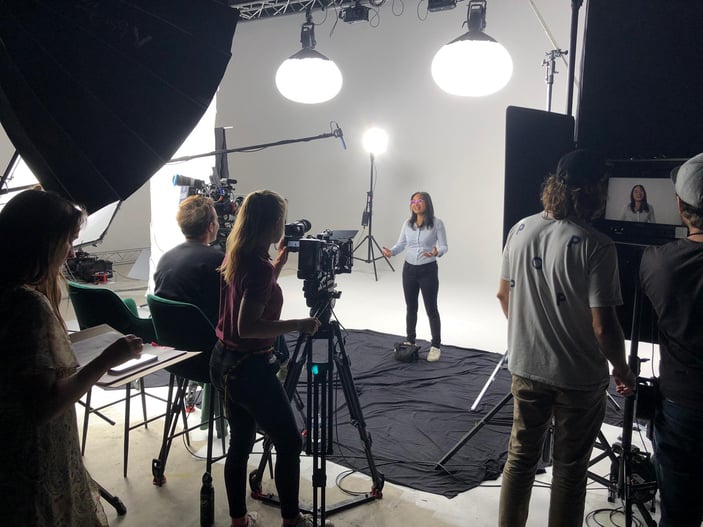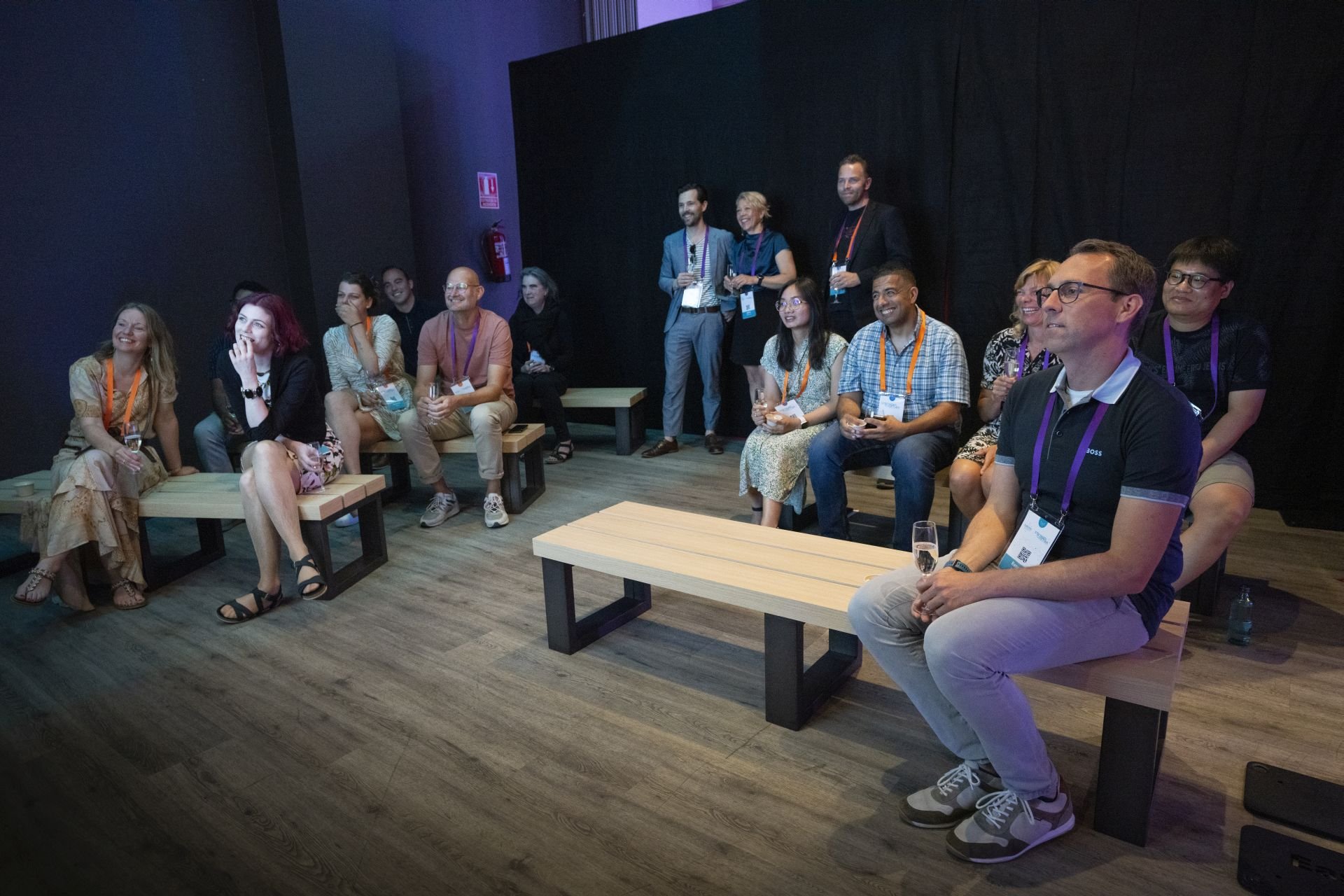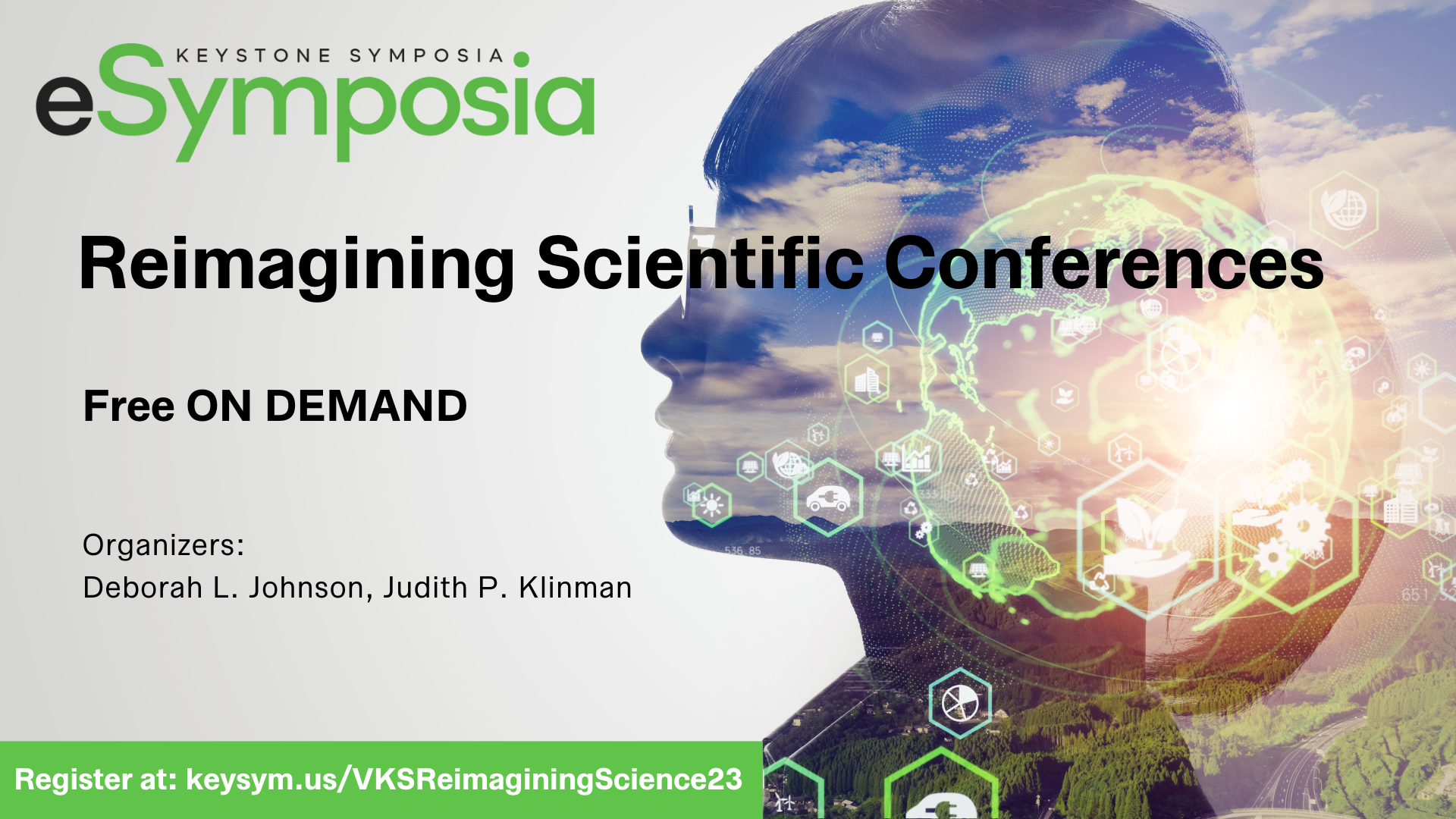A Love Letter to Scientists and the Scientific Process
Why do you do science? What inspires you to go to the lab every day, working late into the night and on weekends? What inspires you to persevere through failed experiments in the pursuit of scientific discovery???
Janine Schuurman, Senior Vice President and Head of Antibody Research & Technology at Genmab, asked these questions to her colleagues and found their answers told a beautiful story of the humanity behind scientific discovery-- a most valuable aspect of science that is often overlooked and under appreciated. So she took it upon herself to share this story with the world, during a time when COVID had made biomedical research more visible, but also much more polarized, in the public eye. Recruiting a top notch team of documentary film makers, the team produced what she calls, "A Love Letter to the Scientific Community."
The reason to make this film was to show love and deep appreciation to the scientists and to the art of science… to show their beautiful intrinsic motivation and capture the beauty of this culture, says Schuurman.
We would like to share this film with you, the Keystone Symposia community, to show our appreciation for your hard work, dedication and commitment to science. You inspire us, and the world, every day! Watch the film below and read on to hear more about Dr. Schuurman's inspiration for the film.

Q&A with Film Producer Dr. Janine Schuurman,
Senior Vice President and Head of Antibody Research & Technology at Genmab
Where did you get the idea for this video?
The idea for the video grew organically out of conversations with Thomas Scott Hughes, an anthropologist working with Genmab on organizational culture. We talked about lab culture, about behaviors, values, and beliefs of scientists. Thomas introduced me to Bruno Latour & Steve Woolgar’s anthropological classic, “Laboratory Life: The Social Construction of Scientific Facts,” published back in 1979. This book was an eye-opener for me, and filled me with questions that intensified and deepened our conversations, and ignited our desire to work together on this project.
What motivated you to make this video?
Thinking and talking about lab culture was very inspirational for me and I wanted to share that feeling with others. The impetus to make the film came during the pandemic, when the coronavirus situation made human elements in doing science suddenly very visible to the public.
As a scientific leader I felt a strong urge to express appreciation to the scientists working to discover medical treatments for COVID, but also for other diseases, for their efforts in general, but specifically during this challenging time. I wanted to acknowledge their dedication, flexibility and perseverance.
The coronavirus situation impacted scientists significantly, particularly those NOT working on COVID treatments. Labs were closed, which means no lab work, no data, no progression. That is highly frustrating. When labs were re-opened, social distancing made it challenging, requiring scientists to sometimes work in shifts, or do extensive logistical planning on top of scientific planning. The situation got worse when the supply chain of lab plastics was disrupted. Maintaining the high level of interconnectivity essential to science in the face of these challenges was difficult—but scientists made it happen.
The reason to make this film was to show love and deep appreciation to the scientists and to the art of science… to show their beautiful intrinsic motivation and capture the beauty of this culture.
Although initially we intended it as an internal video for the scientists of Genmab, in process of the making the film we realized it deserves a broader audience. It is a love letter to elevate all scientists and the art of science and I really hope to get the message across that our motivations and drivers as scientists are so powerful.

Why do you think it is important to convey the people and humanity behind biomedical research?
There are many misconceptions about science and scientists, which is also a topic in the short film. For me personally the biggest misconception is that a single supersmart hero solved a problem in isolation.
In actuality, science is maintained by numerous individuals within a culture, rather than by a single person alone. Doing science is teamwork.
Science is playing, is an art, and when optimally done both technical & human factors matter. Human factors are a key element in doing impactful science. I think this is an important message to bring across.
Have you done any video production before? What did you personally learn from this experience?
No. Like many people I have played with iMovie etc. but this was the first time I’ve produced anything professionally. We teamed up with Brady Welch, an award-winning documentary maker, and he loved the idea and the intentions; he was fully engaged from the start and his energy was infectious. Ideas were born and debated, and rapidly we had a plan! Brady suggested to team up with the film production company MakeWayFilm who really understood our aims and blended perfectly to help make this become a reality.
This project made me realize that producing a film is very similarly to how I ideally intent to lead scientific projects… guided by curiosity and an entrepreneurial energy with attention to the intention of the idea. In both fields, the engagement and teamwork of passionate, often very technically specialized and dedicated people is instrumental for a good result. These people deserve trust, respect and full support. Like in science, film making needs money and technical infrastructure, and a supportive context-- a culture where magic can happen.
The film itself is also a metaphor for the scientific process: a puzzle composed of many pieces that build up into a story of discovery. We collected these pieces from our interviews with scientists, and they reveal a rich narrative about science and the people dedicated to it.
Scientists are often thought to be ‘introverted’ and ‘quiet.’ How did the scientists you asked to be in the video respond to the idea? And to the final product?
The scientists really enjoyed it! Thomas & Brady who created the story of the film did an awesome job, openly asking questions, learning about their perspectives, anecdotes, and stories to get the complete picture of what they needed for the film. For me it was critically important the stories would be honest and unscripted, that they would be real. Their stories are instrumental to the success of the film; they ARE the content!
In the end, the film stars were very proud to see the final video. And the other scientists in our company were also very impressed, even ecstatic! We accomplished our goal of showing our appreciation to them, and you could see in their reactions that the message came across. In addition, people who never entered a lab were intrigued by the passion, dedication and perseverance of the scientists.

Anything else you’d like to share with the audience?
Being involved in a team making this film was awesomely amazing and inspirational. It enriched my life. I would like to express my gratitude to all involved in this project, for giving your energy, heart, and soul to this project. It really takes a village. Thanks to all involved for the amazing support to make this into a reality… and for having me around as unexperienced messy executive film producer.


Related news
Reimagining Scientific Conferences: pandemic lessons in reducing carbon footprint, engaging new audiences & rethinking strategies for scientific exchange, now on Demand
Scientific conferences have long been the medium of scientific exchange, inspiration and...
Looking Back on 50 Years of Keystone Symposia: Evolution of Scientific Programming
By Ralph A. Bradshaw
What is now the Keystone Symposia on Molecular and Cellular Biology, which...


%5B82%5D.png?width=180&height=180&name=fb-event-ondemand-cover-04%20(1)%5B82%5D.png)


